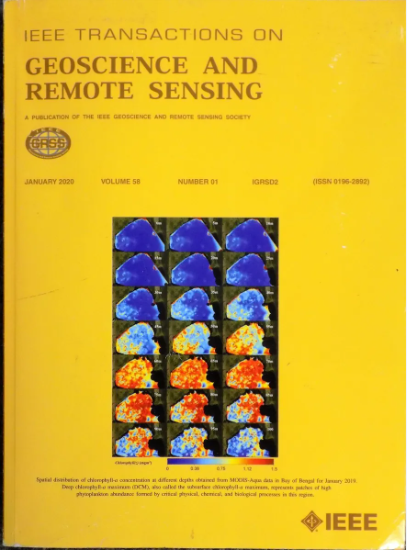基于自我训练的无监督领域适应,用于遥感图像中的物体检测
IF 7.5
1区 地球科学
Q1 ENGINEERING, ELECTRICAL & ELECTRONIC
IEEE Transactions on Geoscience and Remote Sensing
Pub Date : 2024-09-11
DOI:10.1109/TGRS.2024.3457789
引用次数: 0
摘要
我们提出了一种新型的两阶段跨域自我训练(CDST)框架,用于遥感中的无监督域自适应目标检测。第一阶段引入了基于生成式对抗网络(GAN)的域转移策略,以初步缓解域偏移,从而获得更高质量的初始伪标签图像,该策略利用 CycleGAN 转移源域图像以匹配目标域。此外,将自我训练(ST)调整为无监督域自适应检测的关键问题在于伪标签图像的质量。为了在域偏移情况下选择高质量的伪标签图像,我们提出了基于硬示例选择的自我训练(HES-ST),包括三个关键步骤:1) 基于检测器的示例划分(DED),将检测到的示例按照置信度分为易示例和难示例;2) 基于置信度和关系联合评分(CRJS)的硬示例选择,结合检测器和关系网络(RN)模块分别计算出的两个置信度,挖掘可靠示例;3) 基于联合示例(UE)的训练图像选择,结合易示例和可靠硬示例,选择可能包含较少检测错误的目标域图像。在多个遥感数据集上的实验结果证明了我们提出的框架的有效性。与在源数据集上训练的基线检测器相比,我们的方法在目标数据集上的检测性能持续提高了 15.7%-16.8% 的平均精度 (mAP),并在各种域适应场景下取得了最先进的 (SOTA) 结果。本文章由计算机程序翻译,如有差异,请以英文原文为准。
Self-Training-Based Unsupervised Domain Adaptation for Object Detection in Remote Sensing Imagery
We propose a novel two-stage cross-domain self-training (CDST) framework for unsupervised domain adaptive object detection in remote sensing. The first stage introduces the generative adversarial network (GAN)-based domain transfer strategy to preliminarily mitigate the domain shift for higher quality initial pseudo-labeled images, which utilizes the CycleGAN to transfer source-domain images to match the target domain. Moreover, the key issue in tailoring the self-training (ST) to unsupervised domain adaptive detection lies in the quality of pseudo-labeled images. To select high-quality pseudo-labeled images under the domain-shift circumstance, we propose hard example selection-based self-training (HES-ST) with the three key steps: 1) detector-based example division (DED), which divides the detected examples into easy examples and hard ones according to their confidence level; 2) confidence and relation joint score (CRJS)-based hard example selection, which combines two reliability levels calculated, respectively, by the detector and relation network (RN) module to mine reliable examples; and 3) union example (UE)-based training image selection, which combines both easy and reliable hard examples to choose target-domain images that may contain fewer detection errors. The experimental results on several remote sensing datasets demonstrate the effectiveness of our proposed framework. Compared with the baseline detector trained on the source dataset, our approach consistently improves the detection performance on the target dataset by 15.7%–16.8% mean average precision (mAP) and achieves the state-of-the-art (SOTA) results under various domain adaptation scenarios.
求助全文
通过发布文献求助,成功后即可免费获取论文全文。
去求助
来源期刊

IEEE Transactions on Geoscience and Remote Sensing
工程技术-地球化学与地球物理
CiteScore
11.50
自引率
28.00%
发文量
1912
审稿时长
4.0 months
期刊介绍:
IEEE Transactions on Geoscience and Remote Sensing (TGRS) is a monthly publication that focuses on the theory, concepts, and techniques of science and engineering as applied to sensing the land, oceans, atmosphere, and space; and the processing, interpretation, and dissemination of this information.
 求助内容:
求助内容: 应助结果提醒方式:
应助结果提醒方式:


